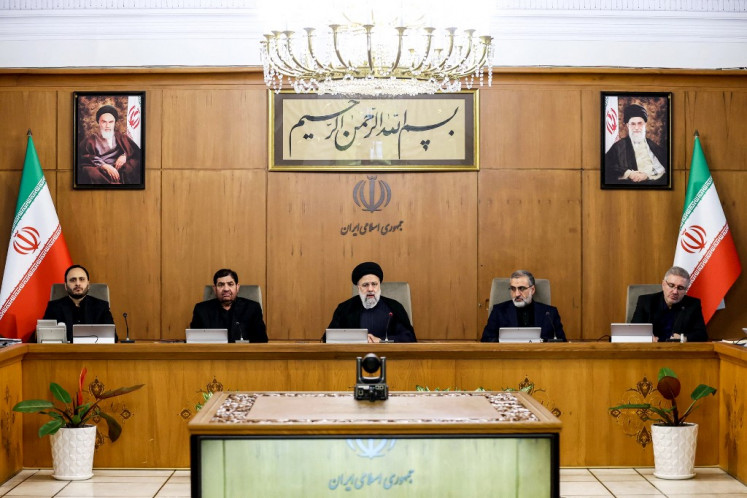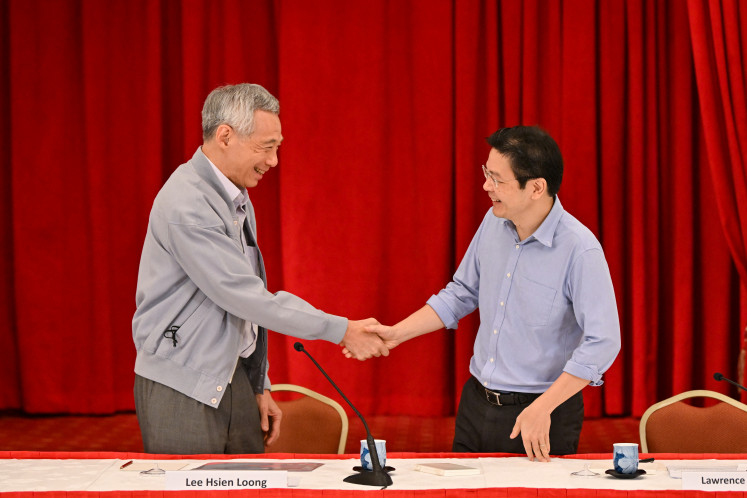Tourism next big thing as campaign intensifies
People in London, one of the world’s most visited cities, may be starting to get more familiar with Indonesia as the “Wonderful Indonesia” campaign logos are now plastered on the city’s iconic black cabs and buses this month
Change Size

P
eople in London, one of the world’s most visited cities, may be starting to get more familiar with Indonesia as the “Wonderful Indonesia” campaign logos are now plastered on the city’s iconic black cabs and buses this month.
Images of several of the archipelago’s jewels, such as the pristine beaches of Bali, the majestic Borobudur Temple in Central Java and Papua’s underwater paradise Raja Ampat, are also displayed on 400 taxis and 10 buses in the month-long campaign in Britain’s capital city.
The campaign has been spread worldwide via television commercials and export food packaging as the government intensifies the tourism campaign, having seen bright prospects for the sector to take a bigger share of the country’s gross domestic product (GDP).
“Tourism will be a significant contributor to GDP. It can generate foreign exchange income and employment in the easiest, fastest and cheapest way,” Tourism Minister Arief Yahya said.
President Joko “Jokowi” Widodo’s administration aims for at least 15 percent of GDP to come from tourism by 2019, from 9.3 percent at present. Tourism, which now sits in fourth place below crude palm oil (CPO) and oil and gas, is also expected to attract $20 billion in foreign exchange income from $10 billion currently.
In doing so, the government is eyeing to double foreign tourist arrivals to 20 million in 2019, half of which is expected to come from China, the world’s second-largest economy with a 1.37-billion population.
The government, which has relaxed visa requirements for tourists from almost every country in the world, even managed to plaster the “Wonderful Indonesia” logo on the 20 million Papatonk shrimp crackers shipped to China every year by local firm United Harvest Indonesia.
In the past few months, Chinese tourists have dominated foreign-visitor numbers, taking the crown from Australia, according to data from the Central Statistics Agency (BPS) announced on Tuesday. Of 8.3 million foreign tourists who came to Indonesia from January to September, over 1 million were from China.
“The good news is that this is the third month in a row we have seen more than 1 million tourists. I hope that with the tourism promotion, the number of visitors will keep on increasing,” BPS head Suhariyanto said.
The Tourism Ministry’s budget for international tourism promotion accounted for half of the ministry’s total budget of Rp 3.4 trillion, indicating that the government means business in campaigning for Indonesia’s tourism.
The government’s efforts were acknowledged by the World Bank in its latest Indonesian economic quarterly report, which said the country had the potential to develop a world-class tourism industry, benefiting from its abundant endowment of tourist destinations and building on the success of Bali.
Tourism could generate significant employment and income multipliers for Indonesia, which could contribute to eliminating poverty and increasing shared prosperity in the country in which there is still a large development disparity between the eastern and western parts, according to the report.
Such is the case in Banyuwangi, East Java, whose regional government has dubbed tourism as an important sector that supports the local economy, with 53 events organized this year as part of the effort to lure in tourists, including Ijen Summer Jazz concerts three times this year in an open venue in the mountainous area.
To date, Banyuwangi has recorded 50,000 tourists, with average daily spending of Rp 2.1 million per tourist, according to data from the regional government. As a consequence, unemployment is down to 2.55 percent from 6 percent in 2010, while poverty dramatically decreased to 9.29 percent from 20.09 percent.
Still, Indonesia faces some problems in tourism development, particularly in terms of infrastructure and human resources, with its workforce possessing a limited set of skills to support tourism.
According to the World Economic Forum Travel and Tourism Competitiveness Report 2015, Indonesia ranks in the bottom half of countries on several infrastructure-related tourism competitiveness indicators, such as ground and port infrastructure, tourist service infrastructure, health and hygiene and Information and communications technology readiness.
Prima Wirayani also contributed to this story









